Nageia nagi profile
Written by Maggie
Aug 24 2021
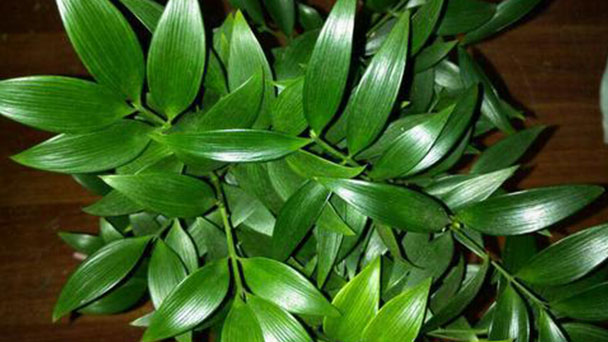
Nageia Nagi is an ancient gymnosperms, originated about 155 million years ago in the Cretaceous period of Mesozoic era, known as a living fossil, is China's second-class national protected plant.It is cultivated in Zhejiang, Fujian, Jiangxi, Hunan, Guangdong, Guangxi, Sichuan and other regions in China, and also distributed in Japan.
Nageia Nagi has the effect of purifying air, resisting pollution and strongly repelling mosquitoes. It is an excellent material for carving, making furniture and plywood, and has high ornamental, ecological, medicinal and economic value.
Nageia Nagi picture
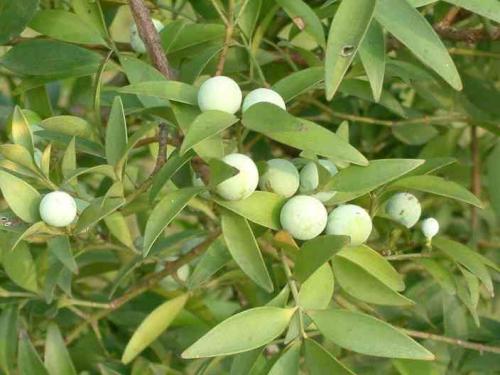
Nageia Nagi morphological characteristics
Nageia Nagi is a tree with a height of 20 meters and a DBH of 50 centimeters. The bark is nearly smooth, reddish brown or dark purplish red, flaky in small flakes;The branches spread or extend, and the crown is wide and conical.Leaves opposite, leathery, long ovate, ovate-lanceolate or oblanceolate elliptic, with many parallel veinlets, no midvein, 3.5 -- 9 cm long and 1.5 -- 2.5 cm wide, dark green above, glossy, light green below, upper narrow, base cuneate or broadly cuneate, narrow down into stalks.
Male coniculate is cylindrical, solitary leaf axils, often branched, 1.8-2.5 cm long, common pedicels coarsely short, base with a few triangular bracts;Female is congealed solitary axils, rarely axillary, base with several bracts, posterior bracts not hypertrophy into fleshy seed trays.
Seeds are globose, 1.2-1.5 cm in diameter, dark purple when mature, white pink, pedicel 7-13 mm long, bracts exfoliated, exoskeletal dermis yellowish brown, apically rounded, basally apical, densely covered with fine concave points, inner seed coat membranous.Flowering period is march - April, seeds mature in October.
Nageia Nagi habitats
Nageia Nagi is cultivated in Zhejiang, Fujian, Jiangxi, Hunan, Guangdong, Guangxi, Sichuan and other regions in China, and also distributed in Japan.Its vertical distribution from the coastal foothills, up to 1600 meters in the alpine zone, often with evergreen broad-leaved forest.
Nageia Nagi growth habit
Temperature
Nageia Nagi the most suitable annual average temperature is 18℃-26 °C. nageia nagi has weak cold resistance and the lowest extreme temperature is minus 7℃, otherwise they are vulnerable to low temperature.
Rainfall
Nageia Nagi grows well in areas with average annual rainfall of 1200 to 1800 mm, but does not grow well below 800 mm, and prefers wet areas without water.
Light
Nageia Nagi is a shade tolerant tree species. The shade slopes grow 5-6 times faster than the sunny slopes. In sunny slopes, sunburn or death will occur in the root neck.Annual light can be 500-800 hours, under the canopy natural renewal good.
soil
Nageia nagi is strict in soil, the sand shale, granite and metamorphic rocks such as the development of deep, loose, moist, humus layer thickness, acidic light silty loam and clay is more appropriate. It likes mountain yellow soil and brown forest soil, especially in the sandy loam, rapid growth in the barren soil on growth is very slow, limestone is unfavorable cultivation, low-lying water poor cultivation and growth.
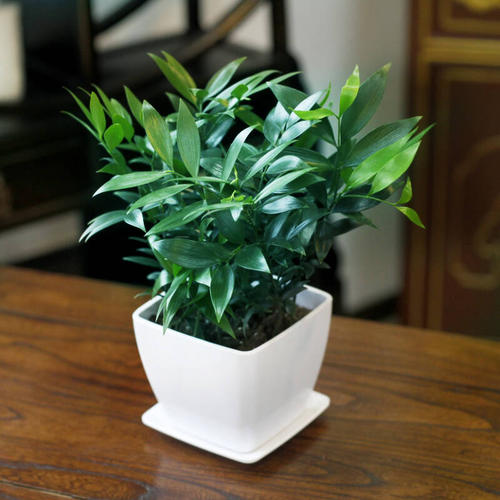
Nageia Nagi propagation method
Seeds
Selection of Nageia Nagi mother tree: It is recommended to select healthy plants with no pest or disease in 20-50 years as the mother tree for seed collection.
Collection time: Generally in October, when the pericarp of the fruit turns from green to yellow, it can be harvested.The collected fruit should be placed in a cool and ventilated place and ripened after 10-20 days.When the nageia Nagi skin turns purple and the flesh is soft, the flesh can be washed and the seeds can be planted by drying in the shade.Avoid insolation. Germination can be completely lost after only 3 days in strong light. Seeds containing oil should not be stored for a long time, the best after harvest sowing, germination rate can reach more than 90%;Nageia Nagi can not sow nor can use sand accumulation stratification treatment: each layer is 10 centimeters thick, one layer of seed and one layer of sand, stacking height is not more than 1 meter, the next spring to take seed and sow.
Nageia Nagi Nursery site selection: seedling nursery site selected sandy loam with short sunshine, convenient water, fertile and humid, and high permeability as nursery site.Make a deep ditch high bed, in the bed to open a ditch seeding, trench distance 25 cm, trench depth 3 cm, seed distance 5 cm, each mu with a kind of 15 kg.
Nageia Nagi Management after sowing: Shade shed with transmittance of 30%-50% should be built after sowing.Timely weeding, loose soil and topdressing drainage and irrigation, that year the seedling height of 20-30 cm, can be out of the nursery afforestation;As the roadside trees with seedlings, it is best to leave the nursery more than 1-2 years.
cuttings
Selection of cuttings: Nageia Nagi is often used in late spring and early autumn to carry out twig cutting with the current year's branches, or in early spring to carry out old twig cutting with the first year's branches.When carrying on the twig cutting, in the late spring to early autumn when the plant growth exuberant, selects the year thick and strong branches as the cuttings, through the test, found that the cutting time to march, the middle of the best.
Pruning: After cutting the branches, select strong parts, cut into a 5-15 cm long section, each section should take more than 3 leaf nodes.When cutting and taking cuttings, it should be noted that the upper cutting edge is about 1cm above the top leaf node, and the lower cutting edge is about 0.5cm below the bottom leaf node. The upper and lower cutting edges should be flat (the knife should be sharp), leaving one blade.When carrying on the hard twig cutting, after the temperature rises in early spring, selects the first year's robust Nageia Nagi branches to make the cuttings. Usually, 3-4 segments are reserved for each segment. The cutting method is the same as the cutting method of the twig.
Cuttings treatment: Cut cuttings were soaked in 100mg/L potassium permanganate solution for 3 minutes, and then the base was soaked in 500×10-6mol/L LBA solution for 4-5 hours.
Cutting methods: cutting, with Nageia Nagi sticks on the substrate a first about 3-5 cm deep hole, insert the handle good cuttings pores, keep cutting blades in the same direction, planting distance to cover adjacent segment leaves not advisable (plant spacing is about 5 cm * 6 cm), with the hand compaction at base, inserted immediately after watering, that is the close contact with the substrate of cuttings.
Management after cutting: after cutting, sunlight must be blocked off by 50%-80%, and after the Nageia Nagi root system grows out, then gradually remove the shading network: sunny days at 4:00 PM every day
Remove the shading net and cover Nageia Nagi before 9:00 a.m. the next day. Seedling height 25-30 cm or so, can be out of the nursery afforestation.
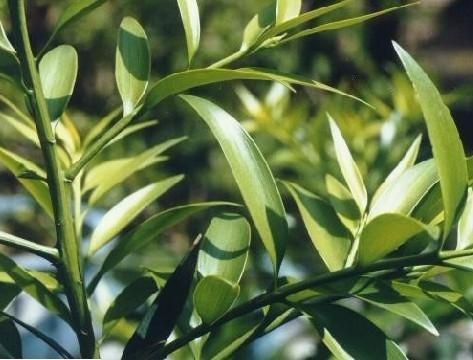
Nageia Nagi pest control
Disease
Nageia Nagi's most common diseases are black spot, powdery mildew and anthrax. The black spot was sprayed with 40% carbendazim 800 times solution or 65% Daisen 400-500 times solution in the first half of June. Powdery mildew 50% carbendazim wettable powder 1000-1500 times liquid spray; Anthrax was controlled with carbendazim 800 times liquid or virus spirit low concentration liquid.
Insect pests
Nageia Nagi's most common pests are aphids, scale insects, and leaf miners. Aphids were sprayed with 50% anti-aphid virus-3000-5000 times liquid or 40% dimethoate 1500-2000 times liquid. The bottom scale insects were sprayed with 2000 times liquid of borer pine; The leaf trap moth was sprayed with 1000-1500 times liquid of dichlorvos or borer pine or with 1500 times liquid of 90% trichlorfon.
Nageia nagi's main value
Watch
The branches and leaves of Nageia nagi are green and shiny, the crown is rich, the tree shape is beautiful, and is developed in recent years, widely used in gardens, residential areas, streets and other areas of the landscape trees.
Ecological
Nageia Nagi leaves and bark can emit thick odor of cloves all year round, which can decompose a variety of harmful waste gases and have the effect of purifying the air, resisting pollution and strongly repelling mosquitoes.
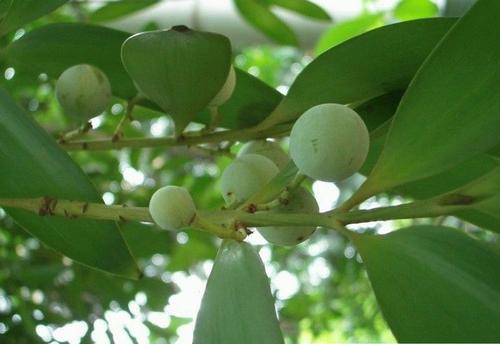
Medicinal
Nageia Nagi's roots, stems, leaves and seeds contain a variety of chemical components, which can relax muscles and activate blood circulation for the treatment of psoas muscle strain, hemostasis and bone repair, traumatic fractures, knife wounds and gunshot wounds, mental diseases, body odor, eye diseases, anti-cold, etc., fresh bark or root is appropriate, decocted in water to smoke and wash the affected parts, and rheumatoid arthritis.Especially in recent decades of research and scientific testing, Nageia Nagi are rich in flavonoids and elemene, flavones have many good names: vascular scavenger, glucose guardian, anti-cancer warrior, natural immune booster, and elemene is an anti-tumor drug.
Economic
Nageia Nagi can produce 100-200 kg of fruit per plant in its full fruiting stage, and the seed oil content is 30%. It can be used as industrial oil and become high-quality edible oil after treatment.At the same time, its wood texture is straight, fine, good processing performance, dry deformation and not cracking, smooth incision, beautiful growth rings, sculpture, furniture, plywood is an excellent material.
Latest Updated
- Benefits of Bugleweed - 7 Science-backed Health Benefits
- Bugleweed Dangers & Side Effects - Is It Poisonous?
- How to Plant Evergreen Trees - What You Should Know
- When to Plant Evergreens - Grow Guide for Evergreen Trees
- 12 Wonderful Evergreen Shrubs for Your Garden
- 12 Popular Evergreen Plants with Pictures for Beginners
- When And How To Prune A Lilac Bush Like a Pro
- How to Grow & Care for Lilac Vine (Hardenbergia Violacea)
- Japanese Lilac Tree (Syringa Reticulata) Care & Propagation Guide
- Shumard Oak Pros and Cons - What to Know
Popular Articles
- Winter maintenance of Antirrhinum Majus
- How to Grow Terminalia Mantaly Tree
- How to Grow and Care for Crossostephium Chinense
- How to grow Antirrhinum Majus in spring
- Peristeria Elata (Dove Orchid) Profile: Info & Care Guide
- Underwatered Snake Plant (Sansevieria Trifasciata) - Signs And How To Fix
- How to Care for Brazilian Jasmine Plant (Mandevilla Sanderi)
- How to Grow & Care for Graptopetalum Purple Delight in Summer
- Rosa Chinensis (China Rose): Plant Growing & Care Tips
- How to Care for Baby Sun Rose (Aptenia Cordifolia)